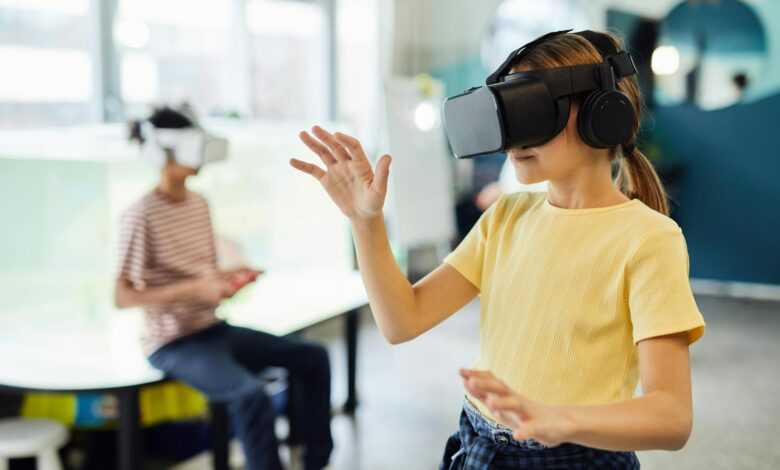
The Future is Now: Cutting-Edge Technologies to Watch Out For
As we stride into the future, the realm of technology continues to evolve at an unprecedented pace, unveiling groundbreaking innovations that have the potential to reshape our lives. From mind-bending advancements in artificial intelligence to revolutionary breakthroughs in renewable energy, the world is witnessing a technological renaissance that promises to redefine the boundaries of what we once thought possible. In this article, we delve into some of the most captivating and transformative technologies that are poised to leave an indelible mark on our society.
Artificial Intelligence: The Rise of Intelligent Machines
Artificial Intelligence (AI) has long been the subject of science fiction, but it has now become a reality that is rapidly permeating every aspect of our lives. AI systems are no longer confined to the realms of research laboratories; they are now integrated into our smartphones, home assistants, and even our vehicles. However, the true potential of AI lies in its ability to process vast amounts of data, identify patterns, and make intelligent decisions that can revolutionise industries and solve complex problems. One of the most exciting developments in AI is the emergence of machine learning algorithms that can learn and adapt without being explicitly programmed. These algorithms can analyse massive datasets, recognise patterns, and make predictions with remarkable accuracy. This has far-reaching implications in fields such as healthcare, where AI can assist in early disease detection, drug discovery, and personalised treatment plans. Moreover, the advent of natural language processing (NLP) has enabled AI systems to understand and communicate in human languages, paving the way for more intuitive and seamless interactions between humans and machines. Virtual assistants like Siri, Alexa, and Google Assistant are just the tip of the iceberg, as researchers are working on developing AI systems that can engage in meaningful conversations, understand context, and even exhibit emotional intelligence.
Quantum Computing: Unlocking the Power of Quantum Mechanics
Quantum computing is a revolutionary technology that harnesses the principles of quantum mechanics to perform calculations at an unprecedented speed and efficiency. Unlike classical computers, which operate on binary bits (0s and 1s), quantum computers utilise quantum bits (qubits) that can exist in multiple states simultaneously, allowing for parallel processing and exponentially faster computations. The potential applications of quantum computing are vast and far-reaching. In fields such as cryptography, quantum computers could crack even the most complex encryption algorithms, revolutionising cybersecurity and data protection. In the realm of scientific research, quantum computers could simulate complex molecular structures and chemical reactions, accelerating the development of new materials, drugs, and energy sources. Furthermore, quantum computing could revolutionise fields like logistics and optimisation, enabling companies to solve complex routing and scheduling problems with unparalleled efficiency. This could lead to significant cost savings, reduced carbon emissions, and improved supply chain management.
Renewable Energy: Harnessing the Power of Nature
As the world grapples with the pressing issue of climate change, the need for sustainable and renewable energy sources has never been more critical. Fortunately, technological advancements in this domain are paving the way for a greener and more sustainable future. One of the most promising technologies in the renewable energy sector is solar power. With the development of more efficient photovoltaic cells and energy storage systems, solar energy is becoming increasingly cost-effective and accessible. Additionally, the emergence of floating solar farms and building-integrated photovoltaics (BIPV) is expanding the potential for solar energy generation in urban areas. Wind energy is another rapidly growing sector, with the development of larger and more efficient wind turbines, as well as offshore wind farms that can harness the power of strong and consistent winds. Furthermore, advancements in energy storage technologies, such as lithium-ion batteries and hydrogen fuel cells, are enabling the integration of renewable energy sources into the grid, ensuring a reliable and consistent supply of clean energy.
Biotechnology: Revolutionising Healthcare and Agriculture
Biotechnology, the application of biological processes and organisms for practical purposes, is poised to revolutionise various sectors, particularly healthcare and agriculture. In the realm of healthcare, gene editing technologies like CRISPR-Cas9 are opening up new avenues for treating genetic disorders, developing personalised therapies, and even eradicating certain diseases. Additionally, advancements in regenerative medicine, such as stem cell therapy and tissue engineering, hold the promise of repairing or replacing damaged tissues and organs, potentially eliminating the need for organ transplants. In agriculture, biotechnology is playing a crucial role in addressing global food security challenges. Genetically modified crops with enhanced resistance to pests, drought, and disease are being developed, increasing crop yields and reducing the need for harmful pesticides. Furthermore, precision agriculture techniques, such as sensor-based monitoring and data analytics, are enabling more efficient and sustainable farming practices.
Augmented and Virtual Reality: Blurring the Lines Between Digital and Physical
Augmented Reality (AR) and Virtual Reality (VR) technologies are revolutionising the way we perceive and interact with the world around us. AR overlays digital information onto the physical world, enhancing our perception and understanding of our surroundings. This technology has numerous applications, ranging from interactive gaming and entertainment to industrial training and maintenance, where AR can provide real-time instructions and visualisations. On the other hand, VR immerses users in a fully digital environment, creating a simulated reality that can be experienced through specialised headsets and controllers. This technology has already gained traction in the gaming and entertainment industries, but its potential extends far beyond that. VR can be used for virtual tourism, architectural visualisation, and even medical training, allowing professionals to practice complex procedures in a safe and controlled environment.




